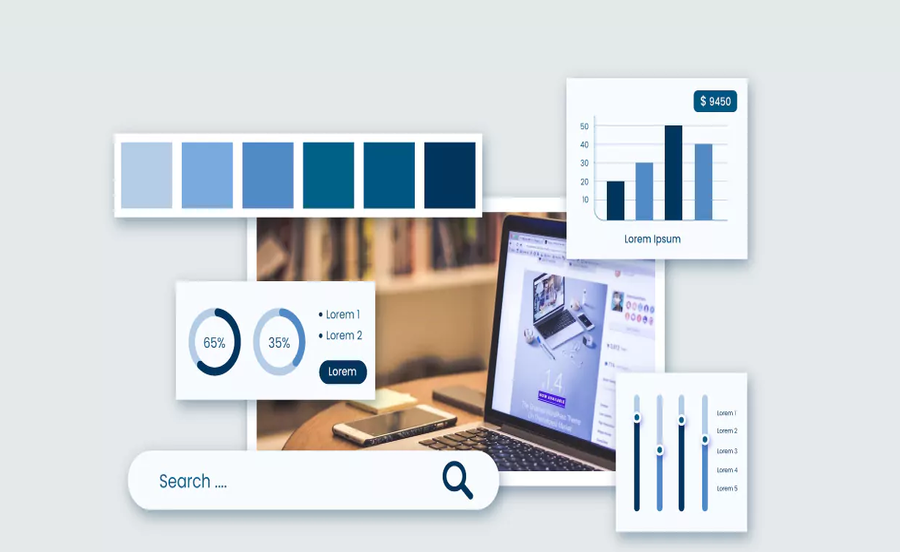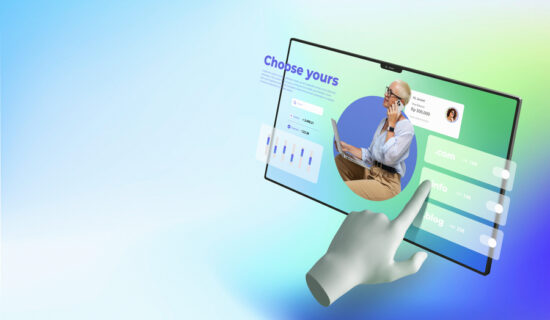
In the world of web design, where aesthetics and functionality merge seamlessly, one often-overlooked tool plays a crucial role in setting the tone and direction of a project: the mood board. While it may seem like a simple collage of images, colors, and textures, a mood board is a powerful visual tool that serves as a roadmap for designers and clients alike. In this blog post, we’ll delve into what a mood board is, why it’s essential in web designing, and how it influences the final outcome of a website.
What is a Mood Board?
A mood board is a visual composition that encapsulates the look and feel of a design project. It typically consists of images, color palettes, typography samples, textures, patterns, and other visual elements curated to evoke a specific mood or theme. Think of it as a brainstorming tool that helps designers articulate their vision and communicate it effectively to clients and team members.
Importance of Mood Boards in Web Designing
Visual Communication: One of the primary purposes of a mood board is to facilitate visual communication. By compiling various design elements onto a single board, designers can convey their ideas, preferences, and inspirations in a clear and concise manner. This ensures that everyone involved in the project is on the same page from the outset.
Setting the Tone: The mood board serves as a blueprint for the overall aesthetic of the website. Whether it’s sleek and modern, rustic and vintage, or playful and colorful, the mood board helps establish the tone and mood that the website aims to convey. This early visualization helps prevent misunderstandings and ensures that the design aligns with the client’s expectations.
Inspiration and Creativity: Creating a mood board is a collaborative process that encourages brainstorming and creativity. Designers can explore different themes, styles, and visual motifs, drawing inspiration from various sources such as nature, art, fashion, and architecture. This exploration often leads to innovative design solutions that set the website apart from the competition.
Client Feedback: Mood boards play a vital role in soliciting client feedback and approval. By presenting a visual representation of the proposed design direction, designers can gather valuable insights from clients regarding their likes, dislikes, and preferences. This feedback loop ensures that any necessary adjustments are made early in the design process, saving time and resources down the line.
Consistency and Cohesion: Consistency is key to a successful web design project. A well-curated mood board helps establish a cohesive visual language that runs throughout the entire website. From the color scheme to the typography choices to the imagery selection, every aspect of the design is carefully considered to ensure harmony and unity across all pages and elements.
Understanding the Essence of Mood Boards
At its core, a mood board is a curated collection of visual elements that collectively communicate the intended look, feel, and atmosphere of a design project. These elements may include:
- Images: Photographs, illustrations, and graphics that inspire or represent the desired aesthetic.
- Color Palettes: Swatches of colors that set the tone and mood of the design.
- Typography Samples: Font styles and arrangements that convey the brand’s personality and voice.
- Textures and Patterns: Visual elements that add depth and dimension to the design.
Expanding on the Importance of Mood Boards in Web Designing
Clarifying Vision and Direction: In the initial stages of a web design project, clients may have abstract ideas or vague concepts of what they want. A mood board serves as a visual anchor, helping to crystallize these nebulous thoughts into tangible design elements. By presenting a curated selection of images, colors, and styles, designers can articulate their vision more effectively, ensuring that everyone involved in the project is aligned with the intended direction.
Facilitating Collaboration and Feedback: Design is inherently subjective, and what resonates with one person may not necessarily resonate with another. Mood boards provide a common visual language that fosters collaboration and feedback among stakeholders. By sharing the mood board with clients, team members, and other collaborators, designers can gather valuable insights and perspectives, which can inform and enrich the design process.
Streamlining Decision-Making: The abundance of choices in web design—from color schemes to typography to layout—can often lead to decision paralysis. Mood boards help streamline the decision-making process by presenting a curated selection of design elements that have already been vetted for consistency and relevance. This allows designers and clients to focus their attention on refining and fine-tuning the chosen direction, rather than getting bogged down by endless options.
Setting the Mood and Tone: As the name suggests, mood boards are instrumental in setting the mood and tone of a design project. Whether it’s a website for a luxury brand aiming for sophistication and elegance or a playful app targeting a younger demographic with vibrant colors and whimsical illustrations, the mood board serves as a visual compass that guides the design towards its intended emotional impact.
Inspiring Creativity and Innovation: Creativity thrives on inspiration, and mood boards are a treasure trove of creative stimuli. By exploring diverse visual references, designers can spark new ideas, experiment with unconventional approaches, and push the boundaries of conventional design norms. This spirit of innovation not only enriches the design process but also results in more engaging and memorable digital experiences for users.
Conclusion
In conclusion, mood boards are indispensable tools in the web design process, guiding designers from concept to completion. By harnessing the power of visual storytelling, mood boards empower designers to articulate their creative vision, foster collaboration, and ultimately deliver exceptional results. At ChetsApp, we understand the importance of mood boards in creating impactful web experiences that resonate with audiences. Contact us today to see how we can turn your vision into reality.
Incorporating mood boards into your web design workflow can elevate the quality and effectiveness of your projects, ultimately leading to more satisfied clients and users. So, the next time you embark on a web design journey, remember to start with a mood board—it’s the first step towards success.

